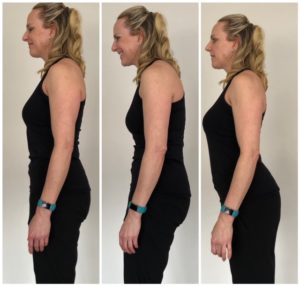
If you’ve ever had an injury, you know how frustrating it can be to get back to your normal routine. Maybe you’ve tried resting, taking it slow, or even physical therapy.
But what if there’s another way to help your body recover that’s gentle, effective, and helps prevent future injuries?
That’s where Pilates comes in. Whether you’re dealing with an injury from sports, an accident, or even just the wear and tear of daily life, Pilates could be a powerful addition to your recovery process.
Understanding Post-Injury Recovery
Injury recovery is tricky. Whether it’s a sprained ankle, a pulled muscle, or a more serious injury, your body needs time to heal. But once the initial inflammation goes down, the challenge becomes regaining strength, mobility, and confidence in that injured area.
Many people think rest is the answer, and while rest is important in the beginning, movement plays a vital role in full recovery. After being injured, the body often compensates in ways that can create imbalances, stiffness, or weaknesses.
If you don’t address these issues, they can lead to re-injury or long-term discomfort. Pilates can be the perfect next step once the acute healing phase is over because it focuses on gentle, controlled movement that restores strength and flexibility.
Why Pilates is Ideal for Post-Injury Recovery
You might be wondering why Pilates, of all things, is so great for injury recovery. Pilates is a low-impact exercise system designed to strengthen the body’s core and improve flexibility, balance, and posture.
What makes it especially suitable for injury rehabilitation is its focus on controlled, mindful movement. This allows you to target specific muscle groups without putting too much strain on the injured area.
The foundation of Pilates is core stability. Strengthening your core—the muscles around your abdomen, lower back, and pelvis—is key for supporting your entire body. When your core is strong, you’re more stable, and that stability can help protect the rest of your body from further injury.
Additionally, Pilates focuses on alignment. After an injury, it’s common to develop compensatory movements—things like limping, favoring one side of the body, or changing how you sit or stand.
These habits can lead to imbalances, which may cause other problems down the road. Pilates helps retrain your body to move in a balanced and aligned way, preventing those compensations from becoming long-term habits.
Key Benefits of Pilates for Rehabilitation
Let’s get into some of the specific benefits of Pilates when you’re recovering from an injury:
1. Improves Flexibility and Range of Motion
Injuries often leave you feeling stiff or limited in your movement. Pilates can gently stretch and lengthen muscles that have become tight due to injury, increasing your range of motion over time.
Unlike aggressive stretching or high-intensity exercises, Pilates focuses on slow, controlled movements, which are perfect for coaxing stiff muscles back into action without causing further harm.
2. Strengthens Weakened Muscles
After an injury, certain muscles may become weak from disuse. Pilates allows you to gradually rebuild strength in those areas without putting too much pressure on them.
By targeting specific muscle groups, especially the stabilizing muscles, Pilates ensures that your entire body stays balanced and strong as you recover. For example, if you’ve injured your knee, Pilates can help strengthen the surrounding muscles like the quads, hamstrings, and glutes, which provide crucial support to your joints.
3. Prevents Re-injury
One of the biggest risks post-injury is re-injury. Whether it’s returning to exercise too soon or not addressing imbalances in the body, it’s easy to find yourself back at square one. Pilates is designed to be gentle and gradual, helping you avoid overloading your body before it’s ready.
As you build up your strength and flexibility, you’ll also improve your awareness of how your body moves. This heightened body awareness can help you avoid movements that might cause a relapse.
4. Enhances Balance and Posture
Injuries often throw your posture and balance out of whack. Maybe you’ve been favoring one leg, or you’re sitting or standing differently to avoid pain. Pilates helps bring your body back into alignment by strengthening the muscles that support good posture and improving balance. This is especially important if your injury was in your back or legs, as poor alignment can exacerbate pain or lead to further injuries.
Tailored Pilates Programs for Different Injuries
The beauty of Pilates is its adaptability. There’s no one-size-fits-all approach, especially when it comes to injury recovery. A good Pilates instructor will tailor your sessions to your specific injury and recovery needs.
Here are a few examples of how Pilates can be used to address different types of injuries:
- Back Injuries: Many people turn to Pilates after experiencing back injuries because it’s fantastic for strengthening the muscles that support the spine. Gentle movements like pelvic tilts and modified roll-ups can help you regain mobility in your back while strengthening your core and reducing strain on your spine. Research shows that Pilates is effective in reducing low back pain. A study from the Journal of Orthopaedic & Sports Physical Therapy found that Pilates helps improve core stability, posture, and functional ability, easing chronic low back pain. The National Institutes of Health also highlights that Pilates strengthens muscles supporting the lumbar region, enhancing back stability and reducing pain.
- Knee Injuries: Knee injuries are another common issue that Pilates can help with. Exercises that focus on alignment, like leg circles or footwork on the reformer, are great for rebuilding strength around the knee while keeping the joint stable. Research supports the use of Pilates in knee injury rehabilitation. Pilates focuses on strengthening muscles around the knee, improving alignment, and restoring mobility, which helps reduce strain on the knee joint. A study in the Journal of Bodywork and Movement Therapies (2006) found that Pilates can enhance knee function and decrease pain, particularly for conditions like patellofemoral pain syndrome or post-surgery recovery.
- Shoulder Injuries: For shoulder injuries, Pilates focuses on increasing mobility in the shoulder joint and strengthening the muscles of the upper back and arms. Exercises like scapula slides and modified arm reaches help improve flexibility while building strength. Pilates is beneficial for shoulder injury rehabilitation due to its focus on strengthening the muscles around the shoulder, improving flexibility, and enhancing stability. A study published in the Journal of Bodywork and Movement Therapies (2010) shows that Pilates can reduce pain and improve the range of motion in individuals recovering from rotator cuff injuries or other shoulder issues. By focusing on controlled, low-impact exercises, Pilates helps restore mobility without putting excess strain on the shoulder joint.
Pilates and Physiotherapy: A Collaborative Approach at Thrive Therapeutics
At Thrive Therapeutics in Barrie, Pilates isn’t just about stretching and toning. The teachers work hand-in-hand with physiotherapists to ensure that your Pilates sessions are not only effective but also safe. This collaboration means that rehabilitation principles are integrated into every Pilates routine, especially for those recovering from injury or managing chronic conditions. By incorporating physiotherapy insights, the Pilates teachers at Thrive can modify exercises to accommodate any limitations or pathology, ensuring a safe, personalized recovery plan that supports long-term healing.
Working with a Pilates Teacher in Barrie
Now, you might be tempted to try some Pilates moves at home, and while that’s great, it’s especially important after an injury to work with a professional. A certified Pilates teacher will ensure that you’re using the proper technique and modifying exercises as needed to avoid further strain on your injury. They’ll also design a personalized program based on your specific injury, needs, and recovery goals.
In Barrie, Thrive Therapeutics offers customized Pilates sessions specifically tailored for injury recovery. Their team understands that every injury and body is different, and they’ll work with you to create a program that helps you recover safely and effectively. Whether you’re dealing with a sports injury, recovering from surgery, or trying to manage chronic pain, they have the expertise to guide you through your Pilates journey.
Conclusion
Injury recovery isn’t just about resting; it’s about rebuilding. And Pilates provides a gentle, controlled way to regain your strength, flexibility, and mobility, all while preventing re-injury. The benefits of Pilates extend far beyond just feeling better in the moment—it’s about setting your body up for long-term success.
If you’re recovering from an injury and want to explore how Pilates can help, book a consultation with the team at Thrive Therapeutics in Barrie. They’ll work with you to create a personalized recovery plan that not only gets you back to feeling like yourself but also helps you move better and feel stronger than ever before.
Ready to get started? Reach out today!


